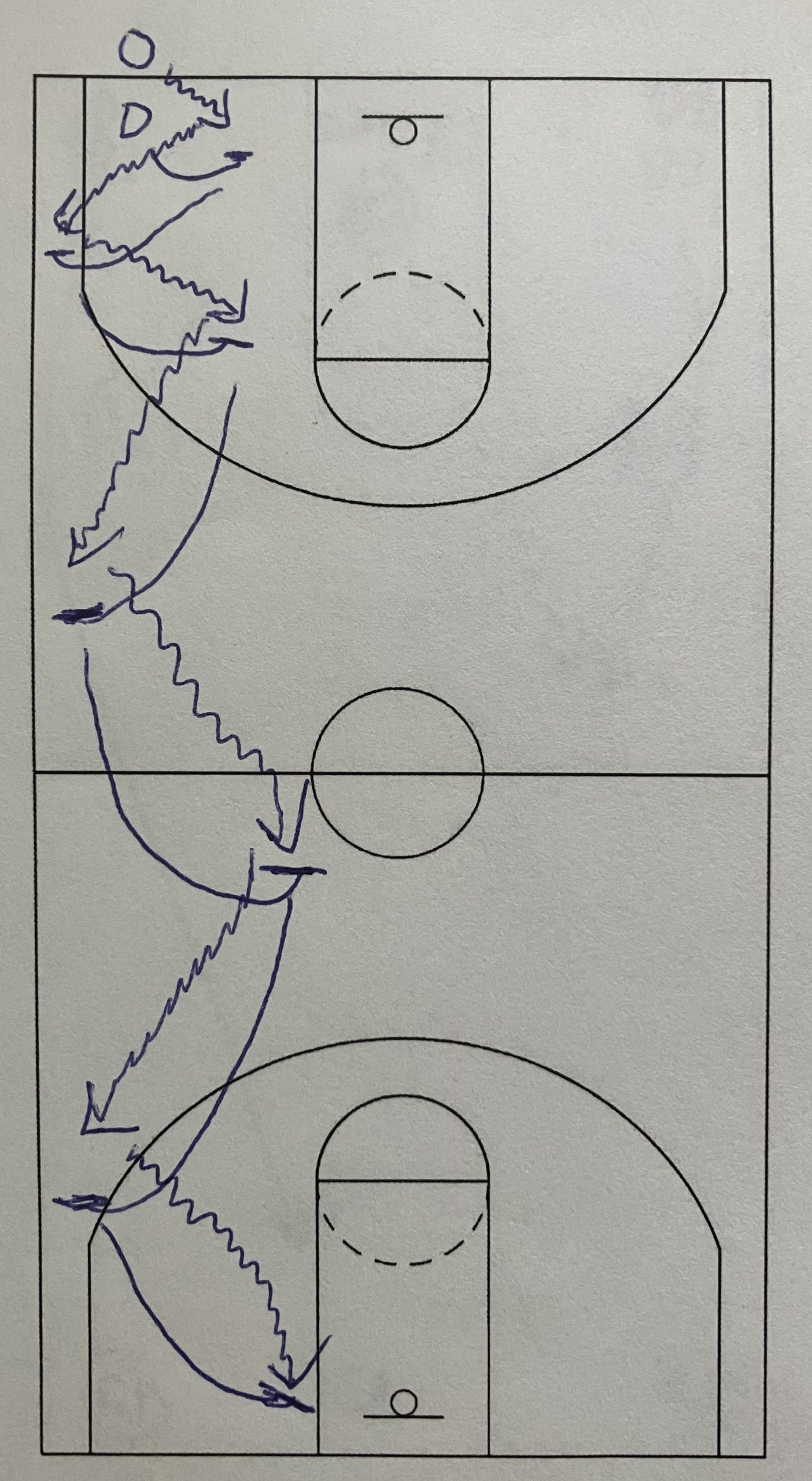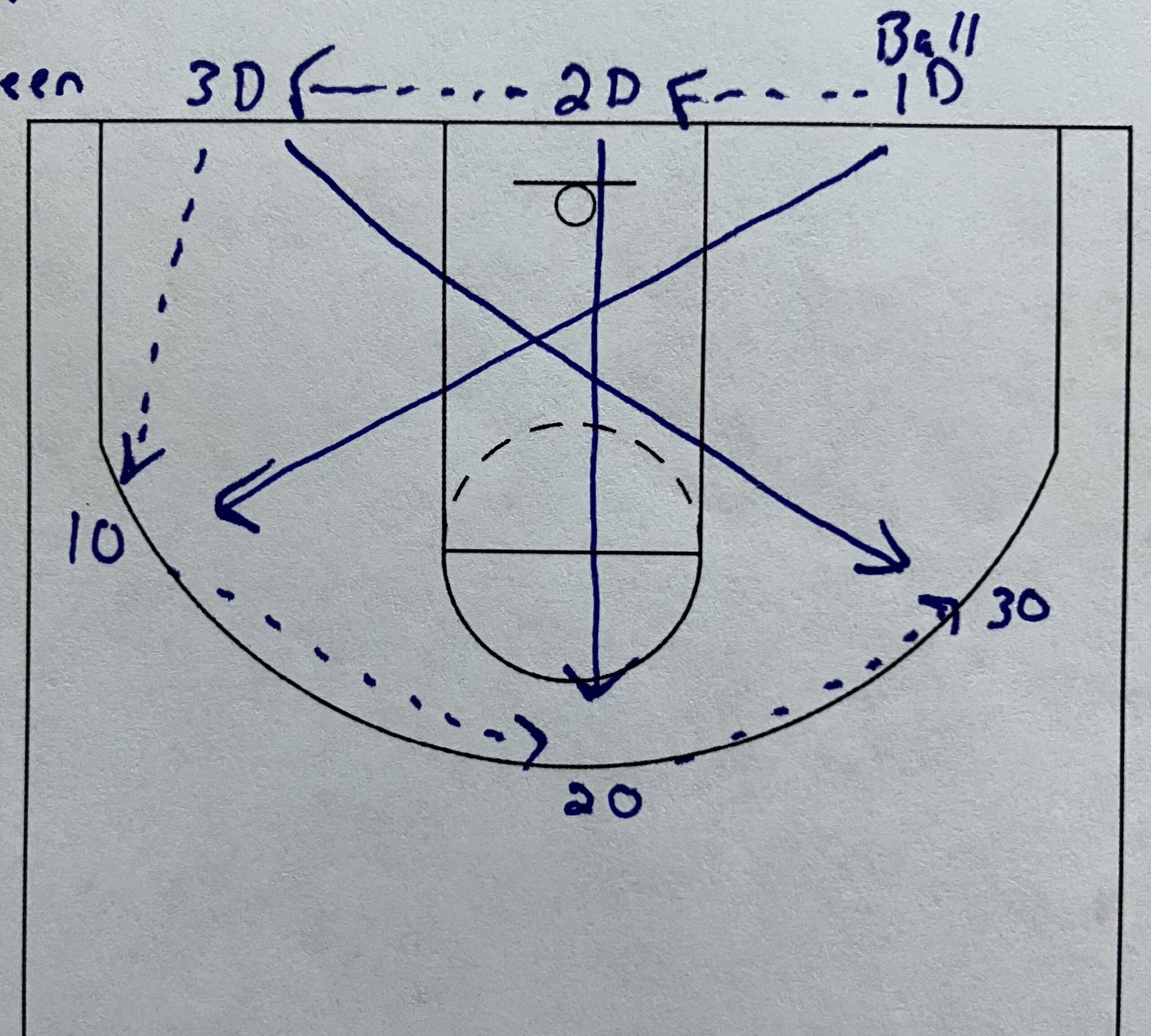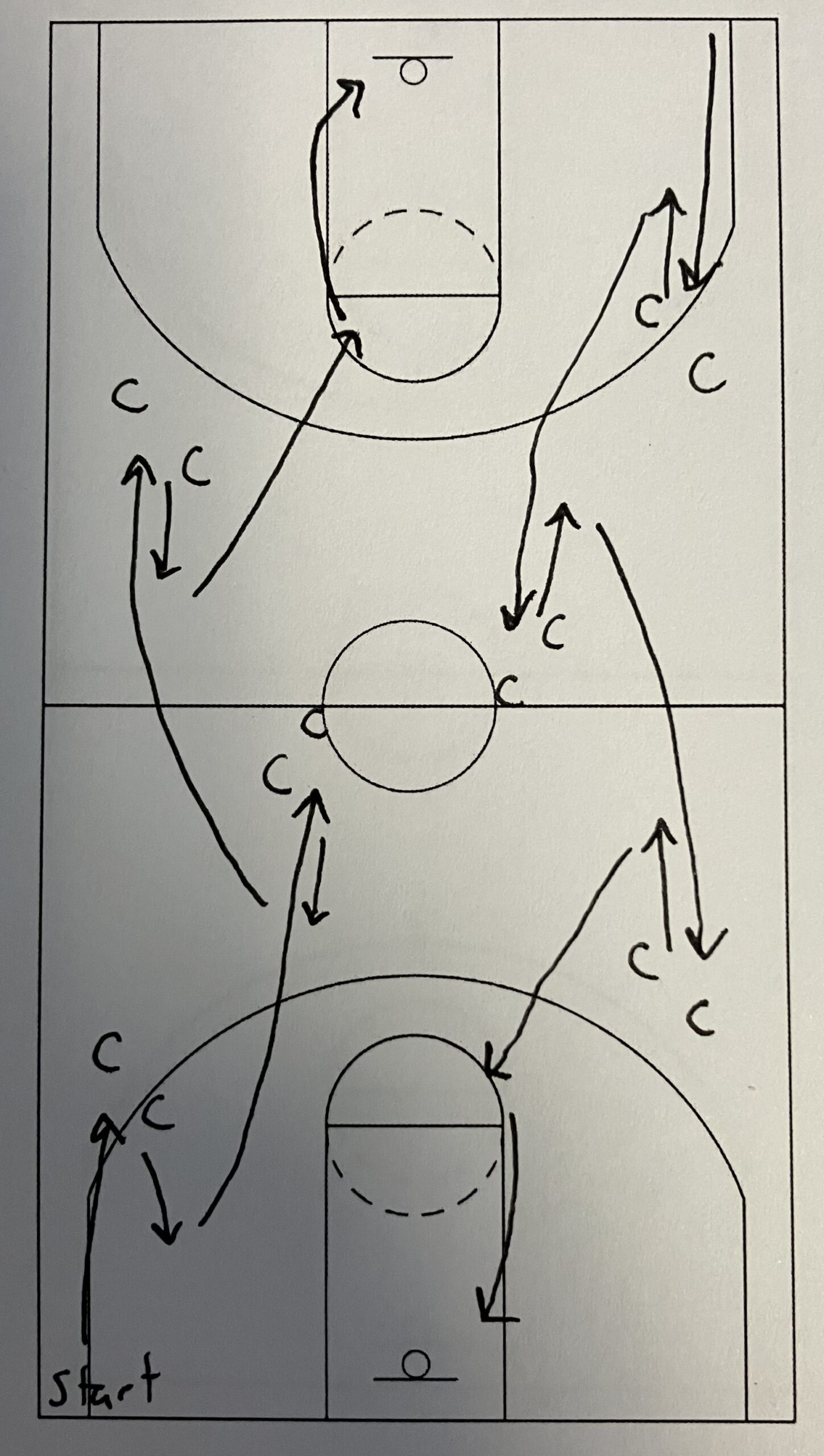One of things I look for in a good ball handler is them having a rhythm to their dribbling. The ability to change speeds and height of dribbles is difficult and separates the bad from the good to the great. Are we able to help players learn the ability to control the rhythm of their dribbling?
One stationary ball handling drill tries to help players learn this rhythm. It can be done at all ages but it is most effective at the younger grades or with players who lack good ball handling skills. Some post players at the high school level who are not confident in their ball handling could benefit from doing this drill as well.
This drill focuses on changing the rhythm of the bounce as well as changing the height of the bounce at various times to help players learn how to control the ball with efficient movements. When done correctly the noise of the ball bouncing and the player catching the ball will be enough to decide how well the player is doing.
The drill is done in a circuit so each dribble will be done a certain number of times before moving onto the next dribble. This continues until all the dribbles have been completed.
This drill is a great drill for high school players to be done right before practice. This helps to put the ball in their hands and get them handling the ball before practice starts. This is a great drill at the youth level before having the players start to dribble up and down the floor. This can be done during practice before starting to do full court dribbling or dribbling into layups.
The order of dribbles is…
- One Bounce, Pop the Ball and Change Hands
- Two Dribbles, Pop the Ball and Change Hands
- Right Hand-High Pound Dribbles to Low Dribbles changing every 5 seconds
- Left Hand-High Pound Dribbles to Low Dribbles changing every 5 seconds
- Right Hand- Two Low Dribbles to Two High Dribbles
- Left Hand- Two Low Dribbles to Two High Dribbles
Here is a breakdown of each individual dribble in the series
One Bounce, Pop the Ball and Change Hands
The player will start with the ball in the right hand. They will dribble one time and pop the ball. Popping the ball is catching it with the right hand on the way up and bringing the left hand to the ball with some force to create a popping sound. After popping the ball, the player will then dribble with their left hand one time. They will catch the ball left handed and bring the right hand to the ball with some force to again create the popping sound. After popping the ball the second time, the dribble restarts with the ball back in the right hand.
At first this will be slow. The players will have trouble popping the ball and keeping it in the new hand to start the next dribble. Players can struggle with the timing and rhythm of moving their hands with the bouncing of the ball. This will help to create coordination for players between their eyes, hands and ball. Once a player starts to get the hang of the drill they will start to be able to speed up. With the right speed, the player can create a drumline-like sound.
Two Dribbles, Pop the Ball and Change Hands
This is the same dribble as before except the player will bounce the ball twice with each hand instead of just once. The player should dribble twice, pop the ball the same as before, and switch hands to dribble two times with the other hand. This process continues to switch the ball into each hand back and forth.
Right Hand-High Pound Dribbles to Low Dribbles changing every 5 seconds
Left Hand-High Pound Dribbles to Low Dribbles changing every 5 seconds
This dribble will be done with just the right hand first and then just the left hand. The dribble keeps changing heights so the players have to keep adjusting the power of their dribble from hard for the high dribbles to soft for the low dribbles. The catches for both types of dribbles are going to be different so the players will become more comfortable receiving both easy and hard dribbles.
The players will start with hard pound dribbles that should bounce up to or above the head. After five seconds the players will then lower the dribble to about knee height. After another 5 seconds the players will then start the pound dribble to get the height of the dribble back up around the head area.
This cycle of high hard dribbles to low soft dribbles will continue for about a minute. After doing it with the right hand, the players will switch to using the left hand and dribble for another minute switching between high and low dribbles.
Right Hand- Two Low Dribbles to Two High Dribbles
Left Hand- Two Low Dribbles to Two High Dribbles
These last two circuits are the hardest. It combines the rhythm of the first two dribbles with the alternating height difference of the last two dribbles. With only two dribbles being used at each height, the players have to learn to control the bounce with the first dribble, maintain the height with the second dribble, then repeat the same process but at the different height. So, players are constantly going from a hard dribble to a soft dribble and back again.
This constant change of power makes the players learn how to maintain control over their dribble. This helps to teach the players to be comfortable with the ball in their hand. Learning how to be comfortable with the ball in their hand will help improve their dribbling skills.
This will be done with the right hand and then the left hand. The player will dribble twice at about the knee and then go straight from the low dribble to a high dribble. The player will dribble very hard off of the 2nd low dribble to get the ball to bounce up around the head area. The player will then dribble a two times with a hard, high bounce. After the 2nd bounce, the player will catch the ball back around the knee area to go back to a low dribble again. This will continue for the duration of the drill.
Conclusion
While these dribbles are not going to be used in a game, they help to teach players to be comfortable with the ball in their hands. They have to create different rhythms and different dribbles to complete the drill. The confidence gained is what is going to help players dribble better after this drill. Players have to learn how to feel the ball in their hand without looking at it. By changing the heights and power of dribbles, players will have to learn how to handle the ball in multiple ways during the circuit.
This is a drill that can be done by players who can already handle the ball well. Young players just learning how to dribble and older players who continue to struggle dribbling are going to benefit from this drill the most though. The idea is to make drills that are uncomfortable at first while the player is learning. Then the drill becomes comfortable when the player masters the skill. Before becoming uncomfortable again with a different drill. This drill will be hard for players who struggle with dribbling but players will improve quickly. Once the improvement takes place, then another drill can be put in its place.




7 thoughts on “Stationary Ball Handling Drill #3-Rhythm Dribbling”